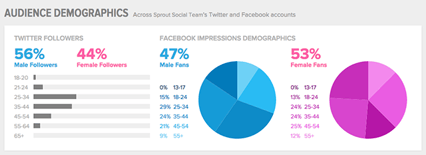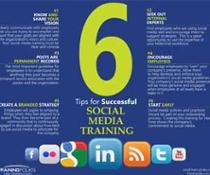Tips to Social Media Strategy and Training
One of the most popular questions we get when facilitating social media training here at TrainingFolks is how to use each medium correctly in order to generate the highest engagement.
Each business is unique and although social media training is similar across the board, the difference lies in the social media strategy. Although there are no exact answers, there are definitely best practices that can be applied.

The first step is to clearly define the goals of using social media for your organization. The second is to identify who you want to share your content with and engage with your brand. The third is then figuring out an effective way to talking to this target via the best social media platforms.
If you’re a consumer brand Facebook may be the right medium for you. If you’re aiming for Millennials, figuring out how to leverage SnapChat is a great strategy. If you’re trying to establish your brand to a more B2B base then LinkedIn is where you want to focus your efforts. And remember, multiple platforms can work together to strengthen your message and your presence so keep that in mind when planning out your content as well.
Step 1: You Talkin’ To Me?
Based on who your target market is, there will be some variance in the best social media platform to use in your strategy. For example, if you are targeting women between eighteen and twenty-nine with a college degree, then Facebook has shown to be very successful. Conversely if you’re looking to engage with males in the same age range also with a college degree, then Twitter has shown to render higher success. For businesses looking to target professional men and women between thirty and sixty-four, LinkedIn is the best option available today.
Social sprout does a great job of further breaking down the key demographics that can be targeted by various social media platforms.
Step 2: Ok, I’m listening.
Once you’ve identified whom your organization or brand would like to engage with, you need to understand their social behavior and plan to share your content on the right days and times of day to maximize reach and engagement.
For example if you’re targeting B 2B contacts then you’re going to want to post heavily during the weekdays for higher engagement. With regards to time, LinkedIn suggests posting between 7 a.m. to 8 a.m. and 5 p.m. to 6 p.m. for best results and avoiding Monday’s and Friday’s for more important content.
2B contacts then you’re going to want to post heavily during the weekdays for higher engagement. With regards to time, LinkedIn suggests posting between 7 a.m. to 8 a.m. and 5 p.m. to 6 p.m. for best results and avoiding Monday’s and Friday’s for more important content.
Step 3: Did You Get My Message?
So you know whom you want to talk to and when you’re going to do it but may find that your resources seem a bit thin when it comes to managing social media marketing. The good news is that there are a number of ways to take the burden off!
Hootesuite is a great tool that acts like a dashboard to help manage all of your social media content across platforms. The great thing is that it’s also compatible with many prominent CRMs.
Another option is using your content management system. Platforms like HubSpot have a full social media component that allows you to schedule posts and also track engagement. Tracking and responding to customer inquiries can also be done using this system.
If you’re not ready to learn how to use another platform, you can also use the social media platforms themselves to help organize your content. For example you can post on your Facebook and have it auto publish to your Twitter account. The only disadvantage with this option is that you have to manually edit the content if you want to change parts of it from platform to platform.
If there is a budget in place there is also the option of outsourcing your social media strategy to a number of digital marketing specialist available globally.
Always remember, social media marketing is just the beginning.
Organizations can further leverage this tool by further integrating it into the company as a whole, and enabling employees to become social advocates. Before doing this ensure that the organization has a clear and concise plan which includes training. The last thing you want to do is have employees post confidential information or sway the tone of your brand with a post.
Our 6 Tips for Successful Social Media Training can help guide you in the right direction and outline areas of concern.
In the end social media is something that continues to evolve, and styaing ahead of the game is the best way to remain relevant to your target audience. If you’re looking for some further guidance with your social media program and training, get in touch with the experts at TrainingFolks today and start getting social!



